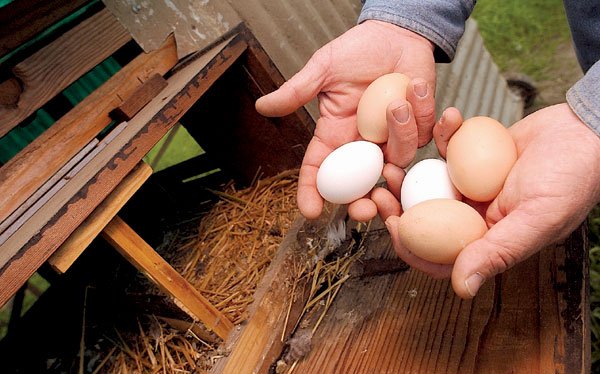In the coming weeks, Gilroy’s Gary Carnes will plant olive trees
on two parcels of land in the area’s eastern foothills.
In the process, he’s entering an industry
– harvesting olives that will eventually be made into olive oil
– that’s budding in popularity.
In the coming weeks, Gilroy’s Gary Carnes will plant olive trees on two parcels of land in the area’s eastern foothills.
In the process, he’s entering an industry – harvesting olives that will eventually be made into olive oil – that’s budding in popularity.
And for good reason. Olive oil doesn’t come cheap, meaning the potential profit margin for people like Carnes could make anyone’s mouth water.
“It’s something new because olives have been farmed for olives themselves – not for oil,” Carnes said.
Harvesting olives for that purpose – and to hopefully bank on it – is among an array of new methods of farming that have spread in popularity throughout the nation, California and here in the South Valley.
Other modern methods, such as a boom of organic agriculture – stemming from a spread of health consciousness – also bring a potential for enticing profit margins.
Farmers believe these methods are arising for a couple reasons. One, it’s becoming increasingly more difficult to stand out in modern agriculture. And two, this area of California in particular has experienced continual rises in land costs and rents.
The change in thought on olive farming has emerged in the past few years, Carnes said. It primarily started in Sonoma County and has since moved its way south to the South Valley.
Several olive harvesters and olive oil producers have begun to burgeon in both Santa Clara and San Benito counties – particularly in the Hollister area.
Those in San Benito include Hacienda dela Luna, Oils of Paicines, Pietra Santa, Shutts Ranch and Wilkinson Farms, according to The Olive Source Web site listing of growers, producers and processors.
There were none, as of yet, listed in Gilroy or Morgan Hill. And the Santa Clara County Farm Bureau also did not have a listing of olive farmers.
Carnes said he believes the growth will continue in the near future.
“It’s a viable agricultural crop,” he said.
And if the market remains strong in coming years, profits could keep rolling in. For now, people seem willing to pay a hefty price for the finest oils.
Carnes said many virgin olive oils can go for $20 to $24 a bottle. A business like Oils of Paicines sells its stock online, and it runs from $10 for a 7-ounce bottle to $17.50 for a 17-ounce bottle.
And the U.S. is not even among the world’s largest producers of olive oil. The likes of Spain, Italy and Greece lead the way in the world production of nearly 500 million gallons a year, according to the Olive Source.
Carnes said he has yet to decide whether to farm his olive trees organically – or whether it would provide any added benefits to the product.
Other local farmers have gone the organic route because of its added health guarantees, as well as the premium price a lot of consumers are willing to pay.
Paul Hain of Tres Pinos is one of those farmers. He and his family started “the transition” from traditional farming methods to organic in 1993. They started with orchards, and moved on to include other crops, such as walnuts, and even poultry, such as chickens.
“We tried to find a place to tuck ourselves into a niche and make a little more money at it,” Hain said. “We found it’s a lot of fun.”
Organic farming must abide by standards imposed by the U.S. Food and Drug Administration. Most notably, farmers can’t use synthetic fertilizers and pesticides.
Laws have been passed in recent years to curb the chances for organic impostors, or farmers who don’t follow the rigid standards. And inspectors continually visit sites claiming to harvest organic to make sure they’re doing just that.
Carnes called organic farming “mimicking of nature.” And, because it’s been widely successful in recent years, he believes the giants of farming have to – and will continue to – mimic.
Natural Selections of San Juan Bautista is the largest growing organic shipper in North America, according to Larry Hamway, vice president of marketing.
The company has been doing it under the Earthbound Farms brand name for 20 years, so they’re not exactly new to the scene.
Hamway said people are drawn to organically grown crops for several reasons – personal health, their families’ health and it’s better for the environment. The industry has grown by 20 to 25 percent annually in recent years, and he doesn’t expect that momentum to slow.
“And it’s really growing to meet consumer demand,” he said.
Many traditional farmers believe the mainstream method of doing it is just fine and consumers’ concerns over cancer and other diseases are unwarranted.
Tom Tobias, president of the San Benito County Farm Bureau, said traditional farming methods, which generally produce greater yields, remain as healthy as any.
But Tobias said people are willing to pay the higher price – which Hain said is about 30 percent over that of traditional – for the organics.
“In the past, people would not pay the money for what it took to make a living doing it that (organic) way,” Tobias said.
And he also emphasized success in modern farming comes from finding a niche. And even then, others will lurk and eventually join the fray.
“There’s competition in everything you do,” Tobias said.
And there will certainly be stiff competition in organic and olive oil farming in years to come. It has already started to swell, as Hain believes about 30 percent of local farming is now organic.
“It’s something you’ll see a lot of in the next 10 years,” Carnes said.














